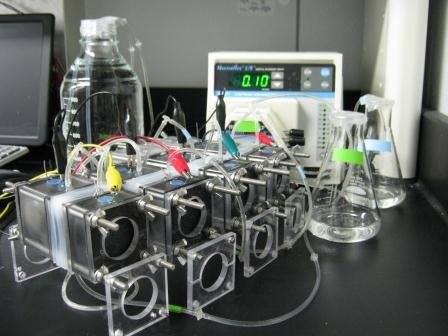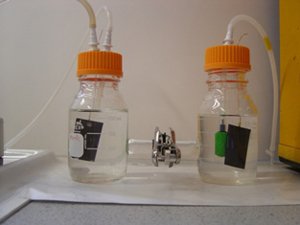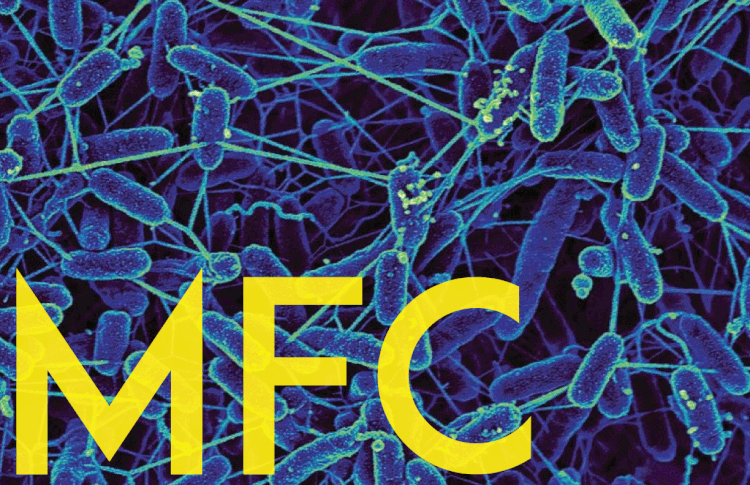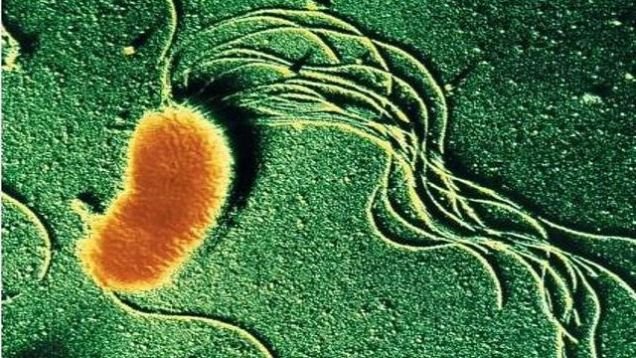Popular Science, Part 1: Microbial Fuel Cells (Turkish/ English) Let's make energy!
1-GİRİŞ
-ENERJİ İHTİYACI
Gezegenimizde altı milyardan fazla insan yaşamaktadır, 2050 için tahmin edilen rakam ise 9,4 milyardır (Lewis and Noceru, 2006).

-FOSİL YAKITLAR
Fosil yakıtlar, geçtiğimiz yüzyılda ülkelerin sanayileşmesini ve ekonomik büyümesini desteklemiş, ancak küresel ekonomiyi süresiz olarak sürdüremeyecekleri açıktır. Petrol, en az 100 yıl veya daha fazla bir süre için tükenmeyecek, ancak petrol talebinin, şu andan itibaren on ya da yirmi yıl öncesine ya da 2015-2025 dönemine kadar bilinen ve beklenen petrol rezervlerinin üretimini aşması bekleniyor. Bu, gelecekte üç ila beş yıldan fazla nadiren plan yapan pek çok tüketici ve işletmeye uzak görünebilir, ancak bu, bir bütün olarak toplum için çok kısa bir zaman dilimi. Örneğin, şehirlerarası bir karayolunun tek bir bölümünü planlamak, on yıl veya daha fazla sürebilir. Küresel enerji ihtiyaçlarımıza cevap vermek için gereken altyapı değişiklikleri çok daha kapsamlı olacak ve sadece altyapımızın değil, yaşam tarzımızın da değişmesini gerektirecektir. Değişiklikler evde ısıtma ve aydınlatmadan, yaşamayı ve çalışmayı tercih ettiğimiz yerlere ve oraya nasıl gideceğimizi etkileyecektir. Enerjinin maliyeti ve kullandığımız enerji, önümüzdeki yıllarda ekonomimize ve yaşam tarzımıza hakim olacak.
ANCAK küresel ekonomiyi süresiz olarak sürdüremeyecekleri açıktır.

Küresel ölçekte, enerji kullanımı 13.5 TW'dir. Dünya nüfusunun sadece % 5'ine sahip olmasına rağmen, ABD dünyanın enerjisinin yaklaşık % 25'ini kullanmaktadır. ABD'deki enerji, bir çok kaynaktan türetilmiştir, ancak çoğu fosil yakıttır.

2017 Temmuz ayı sonu itibarı ile kurulu gücümüzün kaynaklara göre dağılımı; yüzde 33,6’ü hidrolik enerji, yüzde 28,1’i doğal gaz, yüzde 21,5’i kömür, yüzde 7,7’si rüzgâr, yüzde 1,1’i jeotermal ve yüzde 7,4’ü ise diğer kaynaklar şeklindedir.
*Terewatt: Bir watt’ın 1 trilyon katına denk düşen terawatt büyük barajların üretimini ve ulusal çapta enerji tüketimini ölçmek için kullanılabilecek kadar büyük bir elektrik ölçü birimidir.
Gelecekte ne kadar enerjiye ihtiyacımız olacak?
Nüfus artışının bir tahmini, mevcut seviyelerde birleşik ekonomik büyüme, mevcut enerji büyüme oranlarında 2050 yılında 41 TW'lik küresel talebi ortaya koymaktadır.
Ancak, beklenen enerji trendleri göz önünde bulundurulduğunda, 2050 için daha makul bir tahmin 27 TW ve 2100 için 43 TW'dır (Lewis and Noceru, 2006).
Mikrobiyal Yakıt Hücresi Kullanarak Biyoelektrik Üretimi- Elektrojenez Süreci!
-Mikrobiyal yakıt hücresi (MFC) teknolojileri, bakteriler kullanılarak biyokütleden elde edilen elektrik-biyoelektrik üretimi için en yeni yaklaşımı temsil etmektedir.
-İlk gözlemi 1911'de Potter yapmıştır (Potter, 1911).
-55 yıl sonra bile bu alanda çok az pratik ilerleme sağlanmıştır (Lewis, 1966).
-1990'ların başında, yakıt hücreleri daha fazla ilgi görmeye başladı ve MFC'ler üzerinde çalışma artmaya başladı (Allen ve Bennetto, 1993).
-Bununla birlikte, yapılan deneyler, hücrenin içinden elektronları ekzojen elektrotlara taşıyabilen kimyasal aracıların veya elektron taşıyıcılarının kullanılmasını gerektirdi. MFC'lerde atılım, kimyasal aracıların eklenmesinin gerekmediği 1999 yılında ortaya çıkmıştır (Kim ve ark. 1999c; Kim ve ark. 1999d).

Bir sonraki önemli gelişme ise, bazı mikroorganizmaların anoda doğrudan elektron transferi yapabildiklerinin keşfedilmesi ile olmuştur.
2004 yılında MYH’ler kullanılarak elektrik enerjisi üretimi ile atıksu arıtımı arasındaki ilişki açıkça ortaya konulmuştur ve elektrik enerjisi üretilirken evsel atıksuyun uygulama ölçeğinde arıtılabildiği gösterilmiştir.
İlk laboratuvar ölçekli bir MYH prototipi Bruce Logan tarafından geliştirilmiş ve bakterilerin, glukoz, asetat, ya da atık sudaki organik bileşikler gibi mikrobiyal besi maddeleri ile beslendiğinde enerji üretildiğini göstermiştir.



Üstteki görseller Bruce Logan tarafından geliştirilen ilk laboratuvar ölçekli MYH'leri.
Mikrobiyal Yakıt Hücrelerinin Çalışma Prensibi
Tipik bir MYH iki bölmeden oluşmaktadır, bunlar; anaerobik anot bölmesi ve aerobik katot bölmesidir.

Bu iki bölüm protonların veya diğer iyonların anottan katoda transfer edildiği bir membran ile ayrılmaktadır.
Elektro-aktif Mikroorganizmalar
Elektromikrobiyoloji
Ekzoselüler elektron transferini inceleyen mikrobiyolojinin alt disiplini.


Ekzoelektrojen
Elektronları hücrenin dışına aktarabilme özelliği.

MYH’lerde ilk olarak kullanılan kültürler E.coli, P. vulgaris ve S. cerevisiae’dir.
Son yıllarda elektron transferi acısından üstünlükleri olan Shewanella oneidiensis, S. putrefaciens veya Geobacter kullanılmaktadır.
-Geobacter spp. demir ile yerleştirilmiş anot kullanıldığında avantajlıdır.
-Shewanella, elektron transferini kolaylaştıran dış elektron medyatörleri (kinonlar) üretmesi sebebiyle daha avantajlı bir türdür.
-S. putrefaciens, hem doğal hem de atıksu gibi birçok sucul ortamda yaygın olarak bulunan bir türdür.
Geobacteraceae familyasına ait olan metal indirgeyen bakteriler, dış zarlarında bulunan sitokromlar gibi elektrokimyasal olarak aktif redoks enzimleri kullanarak elektronları doğrudan elektrotlara aktarırlar.
Geobacter sulfurreducens, elektronları hücre yüzeylerinin ötesine, membran proteinleri veya nanoteller aracılığıyla elektrotlara aktarabilir ve Shewanella oneidensis MR1, hem çözünebilir redoks mediyatörleri hem de nanotelleri üretir.
Shewanella türünün bir diğer üstünlüğü ise elektron alıcıya karşılık olarak membranın dışından uzanan elektriksel iletkenlikli protein yapılarına sahip “nanoteller” üretiminde bulunmasıdır. Bu pilli gibi yedek uzantılar ortam ve hücre arasındaki elektron transferini kolaylaştırır.

Shewanella türünün ürettiği nanoteller.
Geçtiğimiz 10 yıl boyunca, bilim insanları elektrik kabloları gibi uzun, membrandan dışarı çıkan, kendilerini güçlendirme ve çeşitli katı yüzeylere elektriği transfer eden bir tür "elektrik bakterisi" tarafından büyülendiler.
‘’Pili fikri en güçlü hipotezdi, ama biz her zaman ihtiyatlıydık çünkü kesin kompozisyon ve yapı çok zordu. Ardından deneysel zorlukları çözdük ve veriler bizi tamamen farklı bir yöne götürdüler.’’ Bakteriyel nanotellerle yaptığı öncül çalışmasıyla 2012'de Popular Science Brilliant araştırmacısı olarak adlandırılan El-Naggar, birçok yönden bakıldığında, bakterilerin kendilerine güç vermesinin bile daha akıllıca bir yolu olduğunu ortaya çıkardı.
Shewanella oneidensis MR-1 nanotelleri ekstraselüler elektron taşıma bileşenlerinin dış membranı ve periplazmik uzantılarıdır.

El-Naggar ve arkadaşları tarafından yapılan çalışma.
Mikrobiyal Yakıt Hücreleri Tasarımları

Toplam 144 elektrot çifti (1000 L) ile 24 modüle sahip MYH Reaktör.

Sonuç olarak;
Mikrobiyal Yakıt Hücreleri bilimsel bir merak olarak başladı ve birçok açıdan bu durum böyle olmaya devam ediyor.
Son zamanlarda araştırmacılar bunu gerçekten bir platform teknolojisi olarak gösterdiler.
Bu, MFC'lerin birden fazla uygulamaya sahip olabileceği anlamına geliyor.
Başlangıç olarak, ek enerji girişi olmadan atıklardan enerji üretebilen tek teknolojidir.

Mikroorganizmalar, kendi çevrelerinin son derece hassas, özgül "sensörleri" dir ve MYH, mikrobiyal tepkiyi ve metabolizmayı doğrudan yakalayabilen ve bunu bir analog elektrik sinyali olarak üretebilen çok az teknolojiden biridir.
Bu, herhangi bir ortamda kullanılabilen, tercih edilen mikroorganizmlarla uyumlu olan, teknolojiye doğal algılama yeteneği kazandırır.
Dünya Bankası, atıklarla çalışan ve Tanzanya ve Namibya'nın kırsal bölgelerindeki aküleri şarj etmek ve akü ile çalışan MYH'lerin denemelerine başlamak için finansman sağlamıştır.
Elektron transfer süreci, ekstraselüler elektron transferi ve enerji üretimine mikrobik sınırlar ile ilgili olarak hala keşfedilmesi gereken bu alan, önümüzdeki yıllarda büyümeye devam edecek bir alandır.

Doç. Dr. Bestamin Özkaya ve ekibi Haliç'in tabanından aldıkları bakteriyle elektrik üretti. Bilim insanları, ürettikleri elektrikle led lamba yakmayı başardı. 5 yıldır sürdürülen ve Türkiye'de ilk olma özelliği taşıyan projeye TÜBİTAK 500 bin liralık destek verdi.

1-INTRODUCTION
-Energy Needs
More than six billion people live on our planet, and the estimated figure for 2050 is 9.4 billion (Lewis and Noceru, 2006).
Fossil fuels have supported the industrialization and economic growth of countries during the past century, but it is clear that they cannot indefinitely sustain a global economy. Oil will not appreciably run out for at least 100 years or more, but demand for oil is expected to exceed production from known and anticipated oil reserves ten or twenty years from now, or within the 2015 to 2025 time frame (Rzj7cin 2002). This may seem distant to many consumers and businesses that rarely plan for more than three to five years in the future, but this is a very short time frame for society as a whole. Planning a single section of an interstate highway in a city, for example, can take ten years or more. The infrastructure changes needed to address our global energy needs will be far more extensive and will likely require changes not only to our infrastructure but also to our lifestyle. Changes will affect everything from home heating and lighting, to where we prefer to live and work and how we get there. The costs of energy and how much energy we use will come to dominate our economy and our lifestyle in the coming decades.

Bioelectricity generation using a microbial fuel cell- the process of electrogenesis
Microbial fuel cell (MFC) technologies represent the newest approach for generating electricity-bioelectricity generation from biomass using bacteria. While the first observation of electrical current generated by bacteria is generally credited to Potter in 191 1 (Potter 191 l), very few practical advances were achieved in this field even 55 years later (Lewis 1966). In the early 1990s, fuel cells became of more interest and work on MFCs began to increase (Allen and Bennett0 1993). However, experiments that were conducted required the use of chemical mediators, or electron shuttles, which could carry electrons from inside the cell to exogenous electrodes. The breakthrough in MFCs occurred in 1999 when it was recognized that mediators did not need to be added (Kim et al. 1999c; Kim et al. 1999d).
In an MFC, microorganisms degrade (oxidize) organic matter, producing electrons that travel through a series of respiratory enzymes in the cell and make energy for the cell in the form of ATP. The electrons are then released to a terminal electron acceptor (TEA) which accepts the electrons and becomes reduced. For example, oxygen can be reduced to water through a catalyzed reaction of the electrons with protons. Many TEAS such as oxygen, nitrate, sulfate, and others readily diffuse into the cell where they accept electrons forming products that can diffuse out of the cell.
However, we now know that some bacteria can transfer electrons exogeneously (i.e., outside the cell) to a TEA such as a metal oxide like iron oxide. It is these bacteria that can exogenously transfer electrons, called exoelectrogens, that can be used to produce power in an MFC. The nomenclature used for categorizing process, microorganisms, and reactors for methane generation is: methanogenesis, methanogens, and anaerobic digesters. Similarly, we classify this method of electron-generating process as electrogenesis, with the bacteria exoelectrogens and the reactor a microbial fuel cell (MFC).

Fig: Schematic of the basic components of a microbial fuel cell (not to scale).
The anode and cathode chambers are separated by a membrane. The bacteria grow on the anode, oxidizing organic matter and releasing electrons to the anode and protons to the solution. The cathode is sparged with air to provide dissolved oxygen for the reactions of electrons, protons and oxygen at the cathode, with a wire (and load) completing the circuit and producing power. The system is shown with a resistor used as the load for the power being generated, with the current determined based on measuring the voltage drop across the resistor using a multimeter hooked up to a data acquisition system.
EXOELECTOGENS
The first billion years of life on the planet evolved without the benefit of an oxic atmosphere. Anaerobes evolved over millions of years during this time using various methods to reduce compounds to support metabolism, all without gaseous oxygen to drive respiration. Bacteria that evolved were likely able to use a number of different types of electron acceptors, but the most fascinating for those of us interested in MFCs were bacteria able to transfer electrons outside the cell. We call such bacteria exoelectrogens, “exo-” for exocellular and “electrogens” based on the ability to directly transfer electrons to a chemical or material that is not the immediate electron acceptor. Many anaerobes can only transfer electrons to soluble compounds such as nitrate or sulfate (not cell synthesized) that can diffuse across the cell membrane and into the cell. Exoelectrogenic bacteria are distinguished from these anaerobes by their ability to directly transport electrons outside of the cell which permits them to function in an MFC.
The diversity of bacteria capable of exoelectrogenic activity is just beginning to be discovered. A tremendous amount of information has recently been obtained studying exoelectrogens from two dissimilatory metal reducing genera (Shewanella and Geobacter). The availability of genome sequences for several isolates provides and excellent opportunity to learn more about the fundamental nature of electrogenesis(Heidelberg et al. 2002; Methe et al. 2003). However, community analysis of electrochemically active biofilms in MFCs suggests a far greater diversity of exoelectrogens in these biofilms than was previously suspected. Likewise, the mechanisms of electron transfer to extracellular electron acceptors are poorly understood. Despite genetic studies with these two genera aimed at the identification of electron carriers for iron respiration, the path of electron flow from membrane to the mineral surface continues to be debated (Beliaev el al. 2001; Myers and Myers 1998; Myers and Myers 2002).

NANOWIRES
Gorby and co-workers reported the occurrence of conductive appendages for both Geobacter and Shewanella species (Gorby and Beveridge 2005) which were termed bacterial “nanowires”.


Fig. (A) Shewanella oneidensis MR-1 on a filter imaged using scanning electron microscopy (SEM) showing pilus-type nanowires connecting cells. (B) Single conductive appendage from MR-1 where the white line is the electrical conductivity based on an STM scan shown in (C). Note that the multiple ridges and troughs (lateral diameter of 100 nm, topographic height of 5 to 10 nm) along the structure suggested bundled nanowires. [From Gorby et a/. (2006), reprinted with permission of the National Academy of Sciences, U.S.A.]
Microbial fuel cell (MFC) technologies represent the newest approach to biomass-derived electricity-bioelectric production using bacteria.
Even after 55 years, little practical progress has been made in this area (Lewis, 1966).
At the beginning of the 1990s, fuel cells began to gain more attention and work on MFCs began to increase (Allen and Bennetto, 1993).
Together, experiments have required the use of chemical intermediates or electron carriers that can transport electrons through the cell to the exogenous electrodes. The breakthrough in MFCs occurred in 1999 when it was not necessary to add chemical intermediates.
In 2004, the relationship between the production of electric energy and the wastewater treatment using MFCs has been clearly demonstrated and it has been shown that the domestic wastewater can be treated at the application scale when electricity is generated.
A first laboratory-scale MFC prototype was developed by Bruce Logan and showed that when the bacteria were fed with microbial nutrients such as glucose, acetate, or waste water organic compounds, energy was produced.


As a result;
Microbial Fuel Cells have started as a scientific curiosity, and in many respects this is the case.
In recent times, researchers have really shown this as a platform technology.
This means that MFCs can have multiple applications.
Initially, it is the only technology that can generate energy from waste without additional energy input.

Microorganisms are highly sensitive, specific "sensors" of their environment and MFC is one of the few technologists able to directly capture the microbial response and metabolism and produce it as an analog electrical signal.
This gives the technological natural perception ability which is compatible with the preferred microorganisms available in any environment.
The World Bank has provided financing to work on wastes and to start charging the batteries in the rural areas of Tanzania and Namibia and to start the experiments of battery-powered MFCs.
This field, which still has to be discovered in relation to the electron transfer process, extracellular electron transfer and the microbial boundaries to energy production, is a field that will continue to grow in the coming years.

Please listen to science!
Congratulations! This post has been upvoted from the communal account, @minnowsupport, by hurcell from the Minnow Support Project. It's a witness project run by aggroed, ausbitbank, teamsteem, theprophet0, someguy123, neoxian, followbtcnews, and netuoso. The goal is to help Steemit grow by supporting Minnows. Please find us at the Peace, Abundance, and Liberty Network (PALnet) Discord Channel. It's a completely public and open space to all members of the Steemit community who voluntarily choose to be there.
If you would like to delegate to the Minnow Support Project you can do so by clicking on the following links: 50SP, 100SP, 250SP, 500SP, 1000SP, 5000SP.
Be sure to leave at least 50SP undelegated on your account.